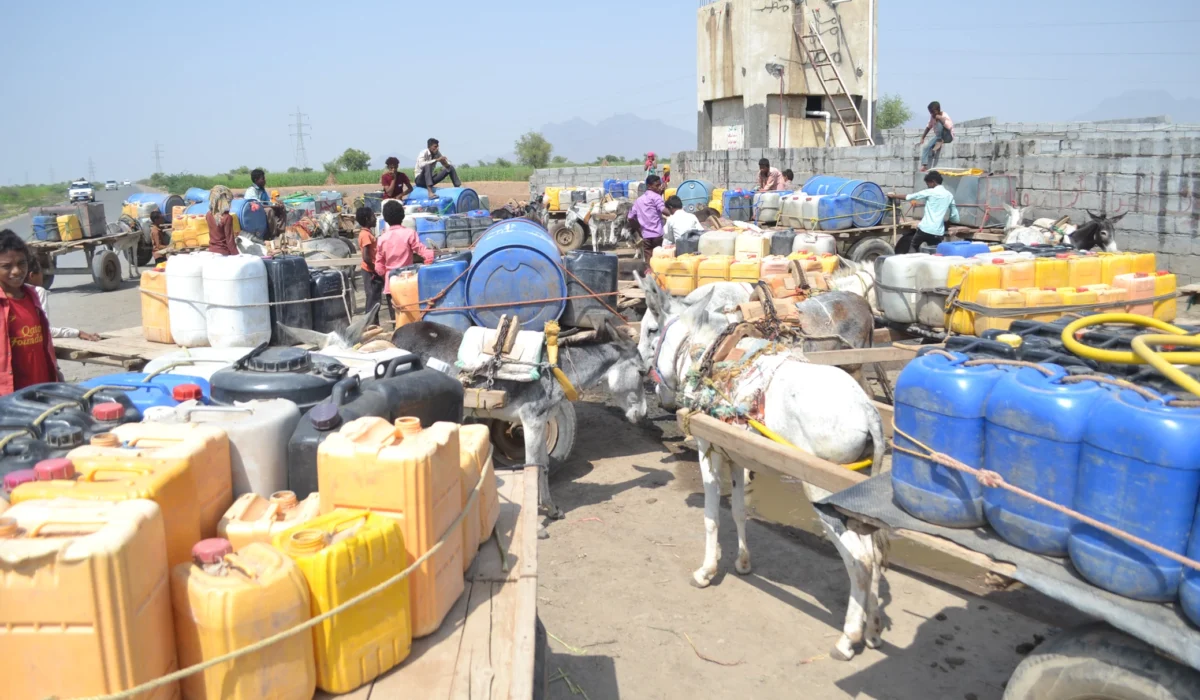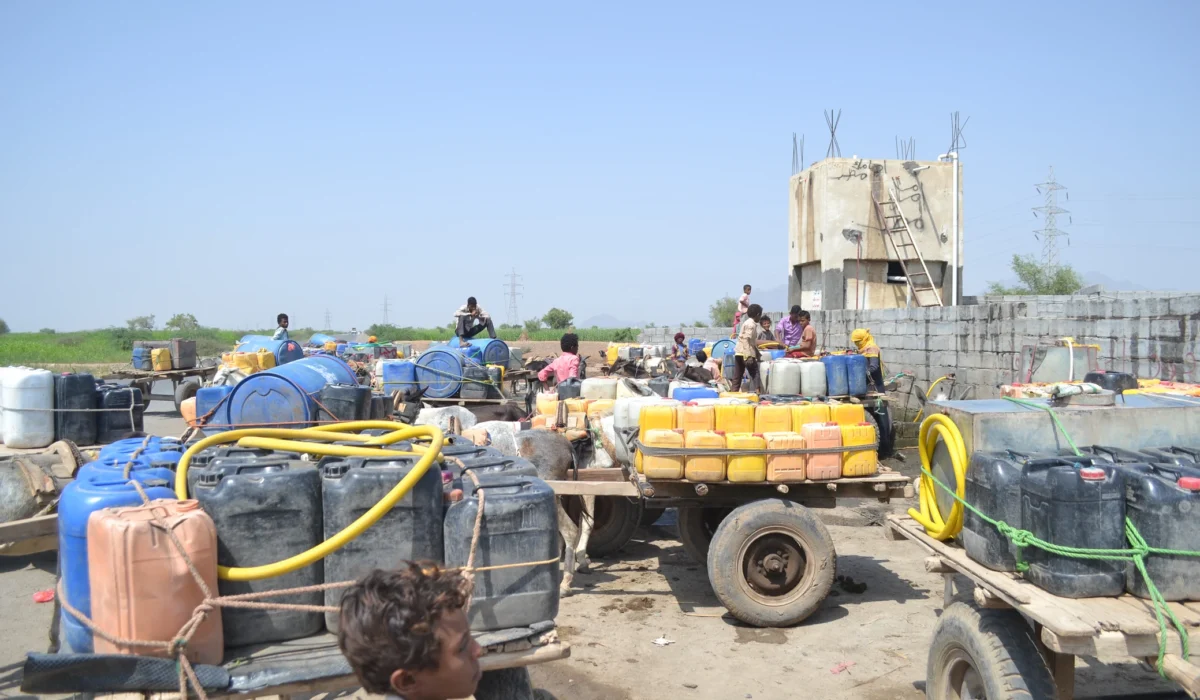January 25, 2019
By Ali al-Tawhami
Mona Relief -Exclusive
Abdu Mohammed Yousuf, 23 years old, one of Al-Dumman village residents, located in the north of Bajil district of al-Hodeidah coastal province ‘west of Yemen’, rides a donkey cart for over 20 Km daily to get drinking water for his family that consists of 9 members five of them are female and four are male, the youngest of them is 3 years old.
Ridding a local made donkey cart, the black skin Abdu Yousuf transfers 12 gallons from his home to a water well located 20 Km away of his home and back to his home daily under the heat of the burning sun.
Yemen indulged into a destructive war since March 2015 that resulted into killing over 15 thousands civilians and displacing over 3 million as well as causing the worst man made humanitarian crisis in the world ever according to the UN classification.
The Saudi lead coalition that ws formed in 2015 launched what it called the Golden victory operation for liberating Hodeidah province from Ansar Allah movement ‘Houthis’, that dominate large swaths of north Yemen, on July 13, 2018.
Among long ques, the young Abdu Yousuf waits his turn to fill his gallons with drinking water from a well that was dug and equipped by a wealthy citizen.
“I come here every four days to get safe drinking water,” Abdu Yousuf told the Center of Yemen Humanitarian Relief and Development Organization (MONA) during a tour of the region.
“Sometimes I wait three hours until my turn comes,” says Abdu Yusuf.
“The pumping of water into our house from the state water project has stopped because of the war that broke out and the lack of diesel,” said Abdu Yousuf.
Over 15 thousands capita from al-Dumman and al-Habil villages benefit from the well that was provided by a wealthy citizen.
“Our situations were better before the war”, “We suffer so much now that we go long distances to get water,” says young Abdu Yousuf.
The total of renewable water sources in Yemen, according to the UN Water Statistics Report 2010, is estimated at 3.4 billion cubic meters a year, 900 million of which are covered by aquifers. Each year groundwater levels decrease from 1-7 m, with scarcity of recharge due to drought seasons. Thus, water consumption rates exceed natural recharge enormously.
The Yemeni per capita water rate, per year, is 130 cubic meters, while the international water rate per capita is 7500 cubic meters per year.
According to international organizations, Yemen is one of the most fragile countries in the world in terms of water security. It is possible to take advantage of sea water and desalinate it, but the cost is high for a relatively poor country such as Yemen.
An officer in charge stands on the water well to organize long queues of donkey carts. Young men/women line up each in front of his/her vehicle until his/her turn arrives, some of them in school uniform.
The Ninth grade school student Ahmad Haige, 16 years old, said he had to organize his time between school and bringing water home.
“I have to skip school 2 days weekly so as to provide drinking water for my family,” said Haige.
“I don’t study well. I know,” says Haige while smiling and rubbing his hair.









